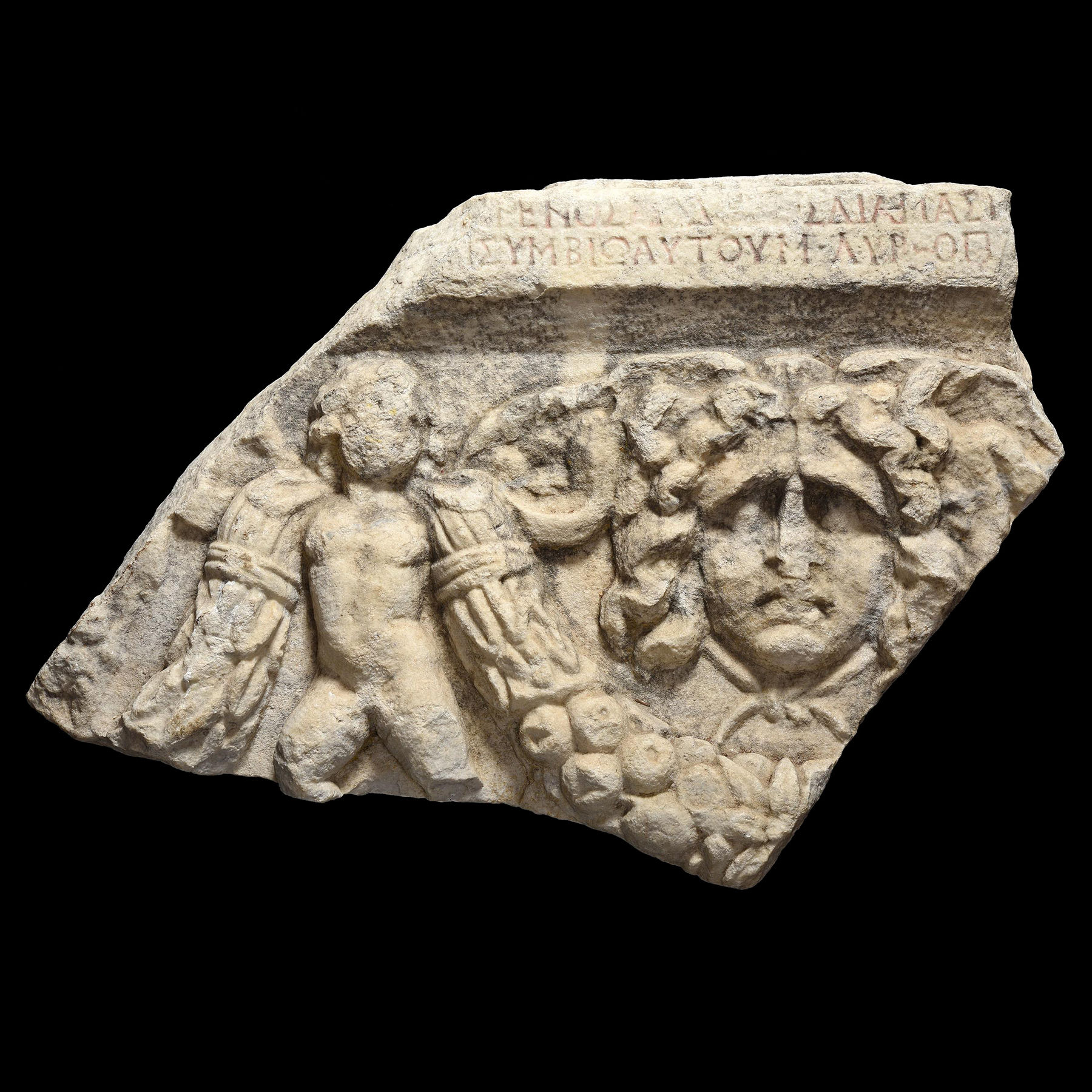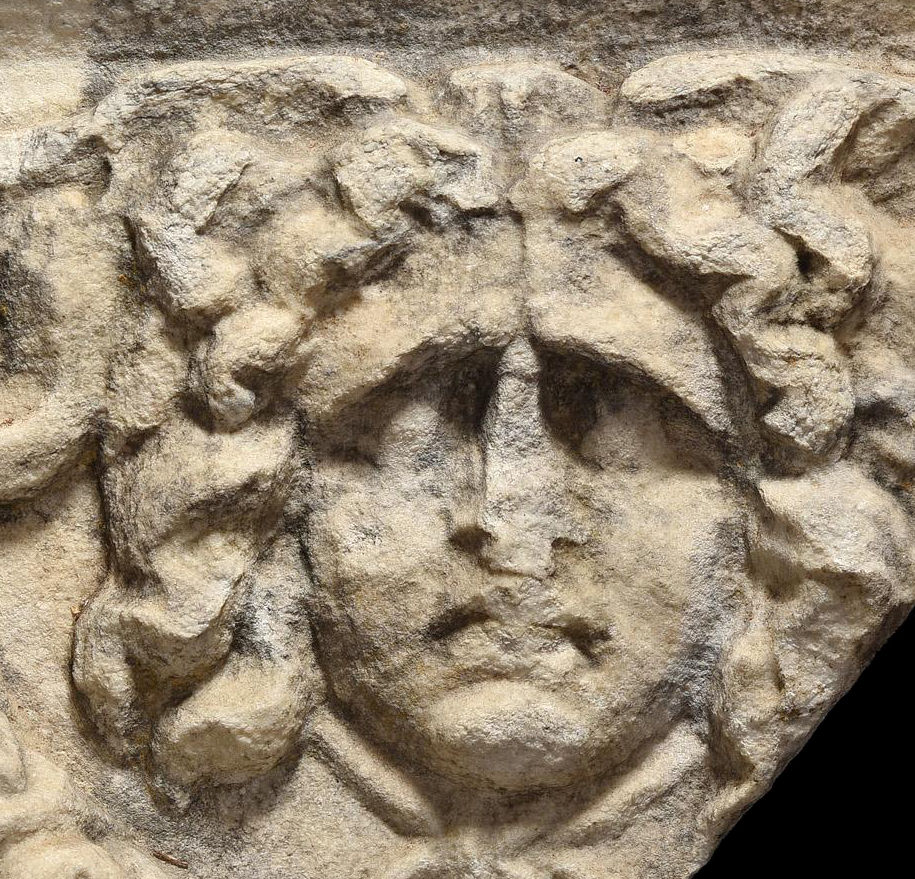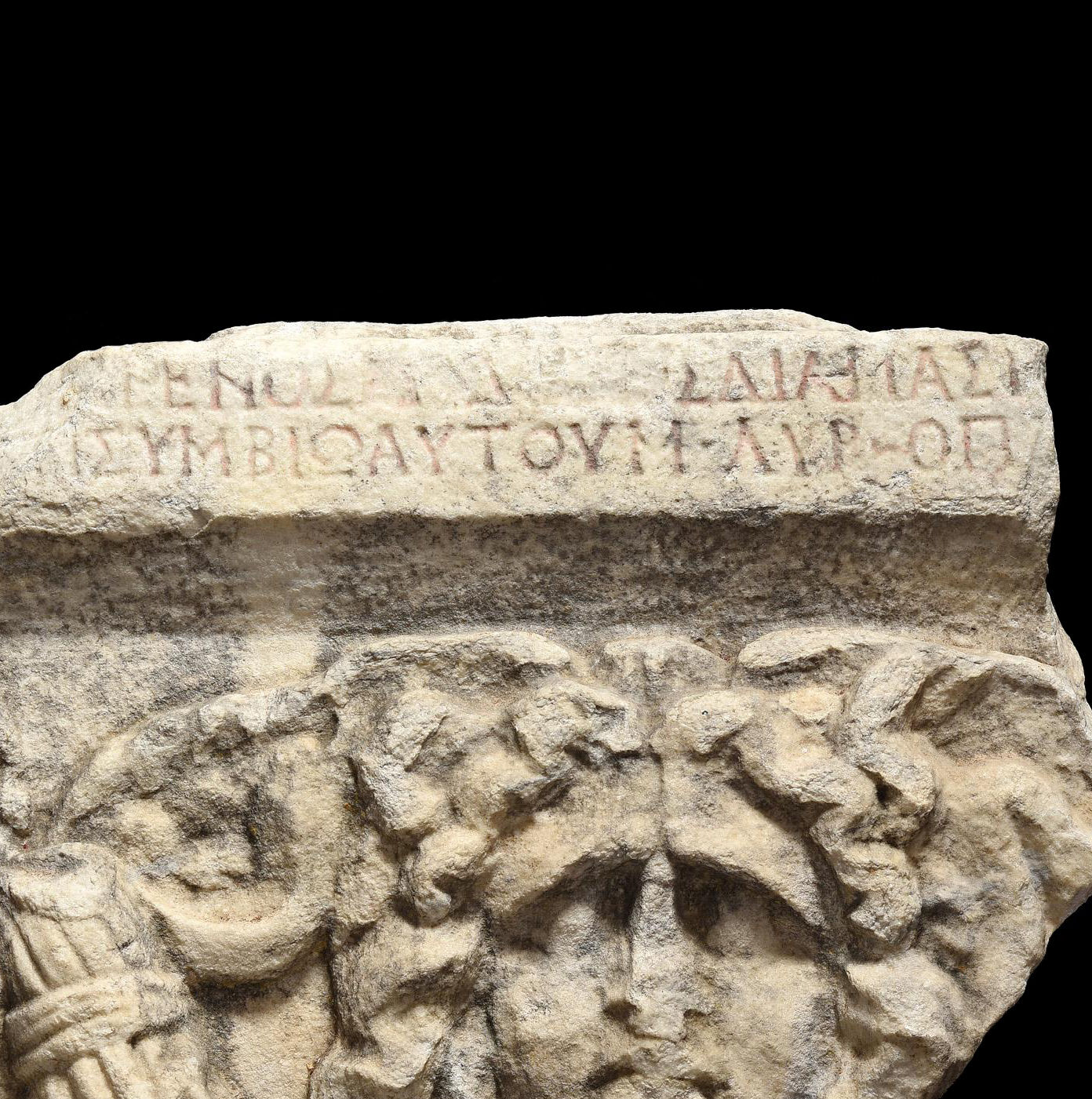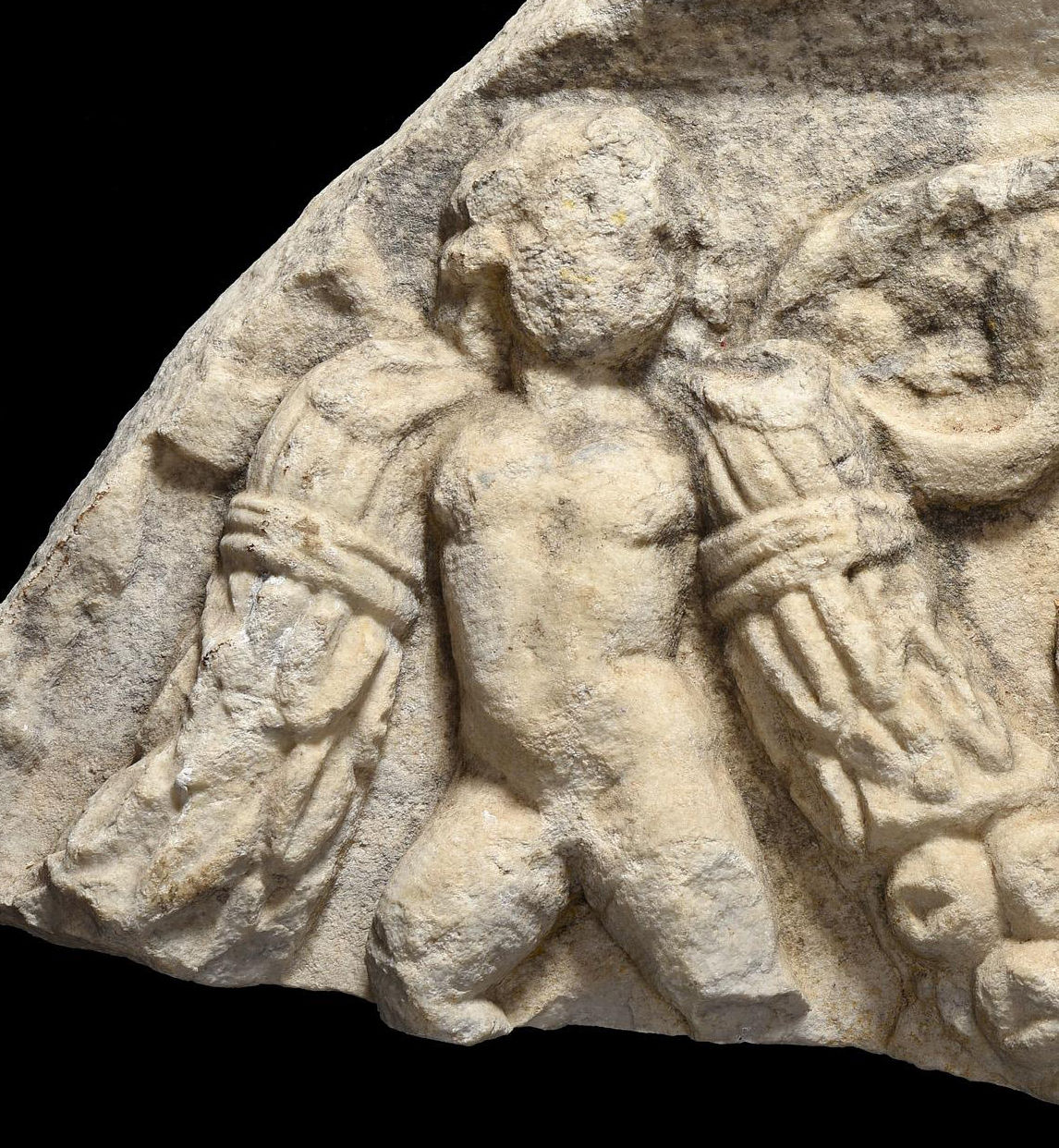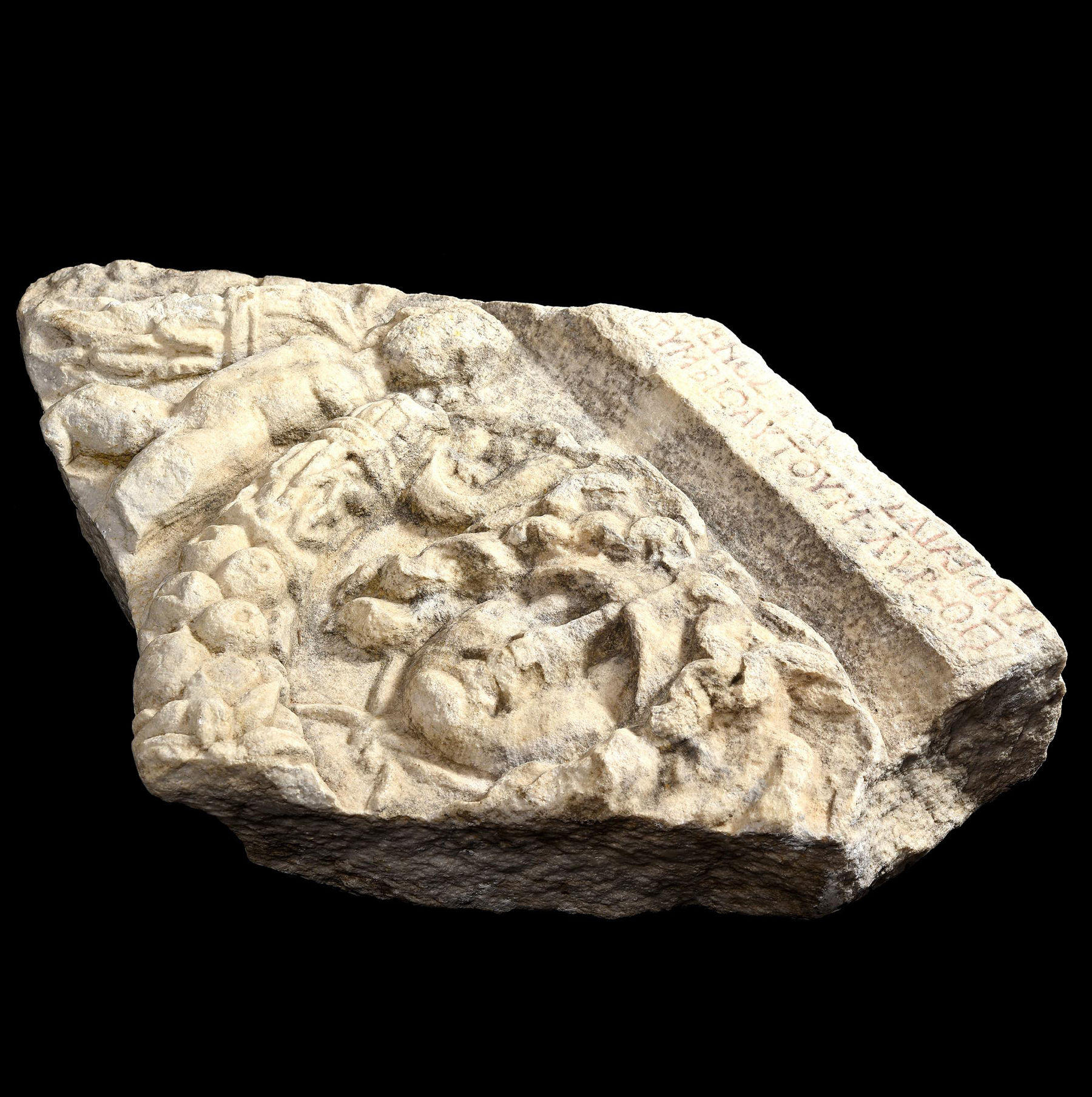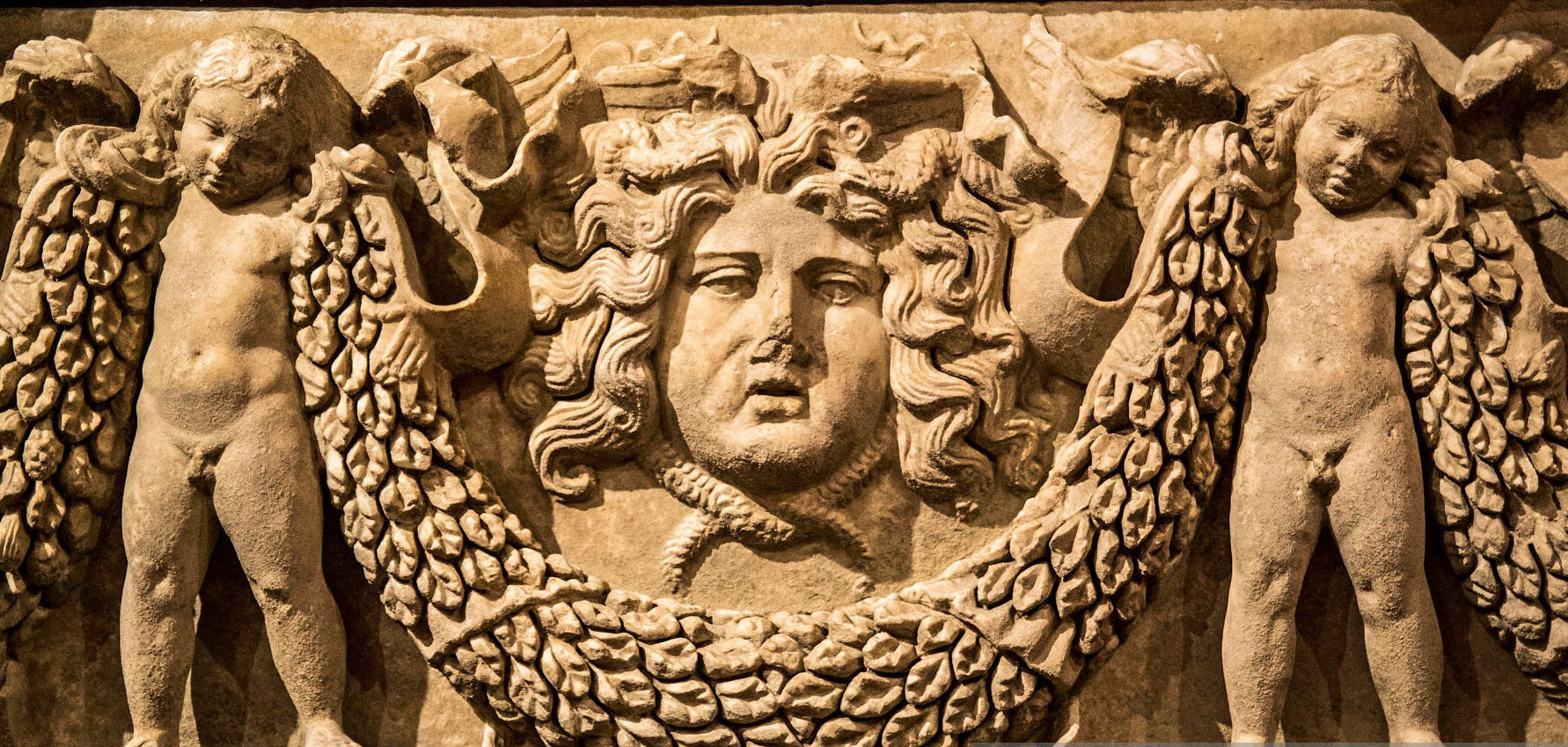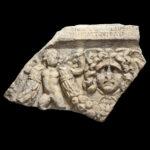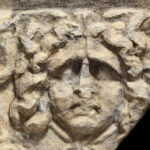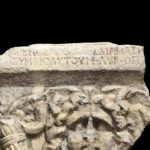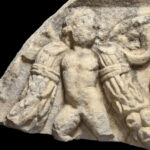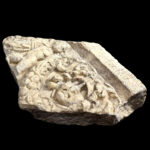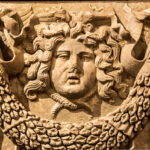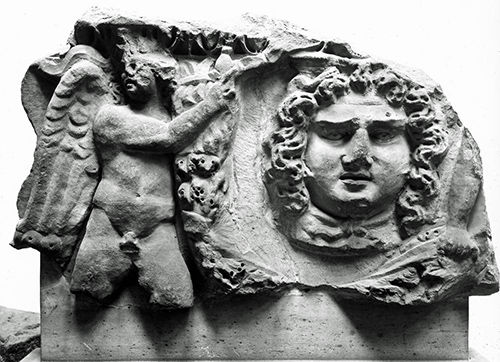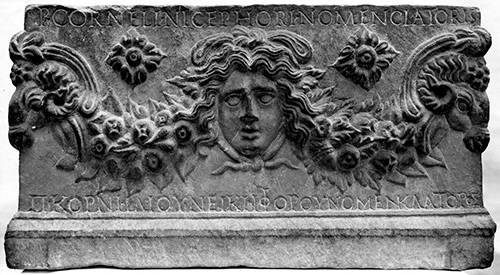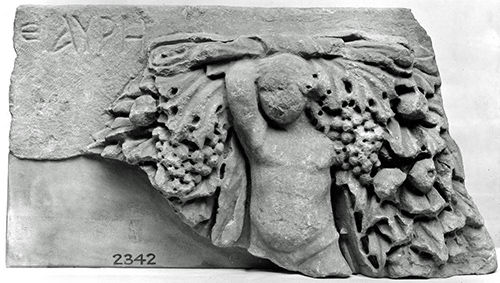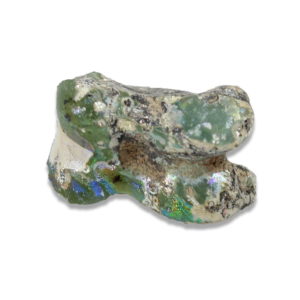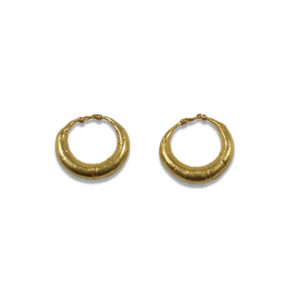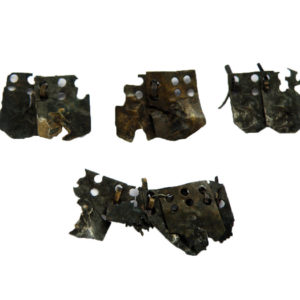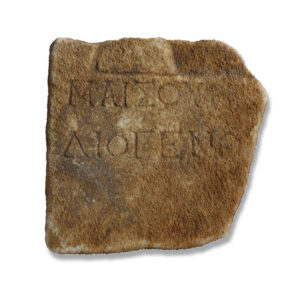Description
| ITEM | Fragment of sarcophagus depicting a Gorgon and Eros with libertus Marcus Aurelius epitaph, Pamphylia Type |
| MATERIAL | Marble |
| CULTURE | Roman, Asia Minor |
| PERIOD | 2nd Century A.D, Antonine Period |
| DIMENSIONS | 55 cm x 82 cm x 13 cm, 100 kg |
| CONDITION | Good condition |
| PROVENANCE | Ex French private collection, South of France, acquired before 1980 |
This sarcophagus presents in relief a mask of Gorgon in a garland of fruits and berries, to the left of the Gorgon, naked Eros, holding on his shoulders the end of the garland and the start of another. Above the Gorgon, a epitaph from libertus Marcus Aurelius.
In Ancient Greece a Gorgoneion (a stone head, engraving, or drawing of a Gorgon face, often with snakes protruding wildly and the tongue sticking out between her fangs) frequently was used as an apotropaic symbol and placed on doors, walls, floors, coins, shields, breastplates, and tombstones in the hopes of warding off evil. In this regard Gorgoneia are similar to the sometimes grotesque faces on Chinese soldiers’ shields, also used generally as an amulet, a protection against the evil eye. Likewise, in Hindu mythology, Kali is often shown with a protruding tongue and snakes around her head.
In some Greek myths, blood taken from the right side of a Gorgon could bring the dead back to life, yet blood taken from the left side was an instantly fatal poison. Athena gave a vial of the healing blood to Asclepius, which ultimately brought about his demise.
Heracles is said to have obtained a lock of Medusa’s hair (which possessed the same powers as the head) from Athena and to have given it to Sterope, the daughter of Cepheus, as a protection for the town of Tegea against attack. According to the later idea of Medusa as a beautiful maiden, whose hair had been changed into snakes by Athena, the head was represented in works of art with a wonderfully handsome face, wrapped in the calm repose of death.
The garland-bearer design was extremely popular in the Mediterranean. It first appeared at the end of the Hellenistic period, and its popularity expanded during the Roman period. The design reached a peak of popularity in the 2nd century CE, adorning sarcophagi made in Asia Minor to be sold in Rome.
Greek garland bearer designs tend to be continuous, and the garlands are furnished with leaves and stems. Roman garland bearer designs are segmented and often use flowers and fruits for decoration.
Garland bearers were also particularly associated to the cult of Dyonisos.


